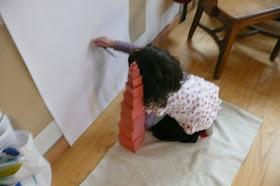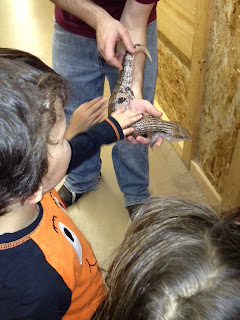We began our study of our 4th vertebrate last week- mammals! We begin this by reading the book: Animals Born Alive and Well by Ruth Heller.
We discussed various features of mammals and asked questions each time one came to visit. Do they have hair or fur? Were they born alive (except for the platypus and spiny anteater)? Did they drink their mother's milk? We asked the owners these questions and other ones like what do they eat and where do they take baths! Murphy here is so big, they have to go to a dog wash! Thanks to Amy R for bringing sweet Murphy in for a visit!
The children matched mammal cards. They colored in parts of a dog booklet and we learned words like brisket and stop. We also made books that describe mammals.
Thanks to A and T (and dad Scott) for bringing in another mammal! Mr. Elliot was a really good sport! The children thought it was funny when he walked around and checked out our classroom! We asked Scott many questions and decided that Elliot was a mammal.
On Friday, we had yet another mammal visit! Sweet Squeak the guinea pig! He came for the morning and visited with us. Thanks to Lira for letting us take care of him! He ate some clementines and carrots!
We asked a lot of questions about Squeak. Guess what? He is also a mammal!
Our fourth mammal visits each day. We have many in our classroom, some young and some old(er)....
You may have guessed it! Those mammals are us!








































